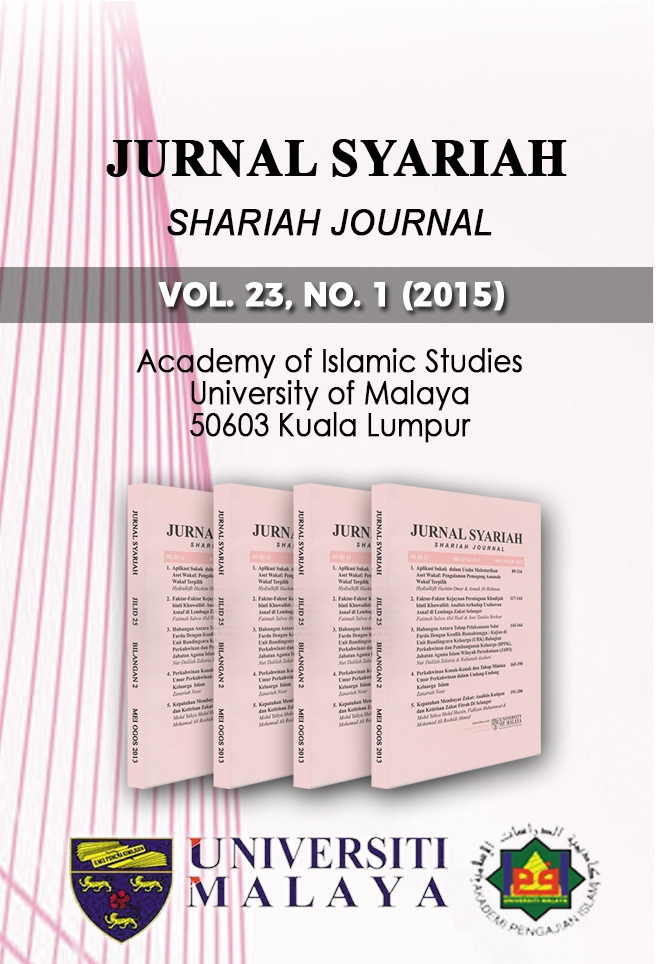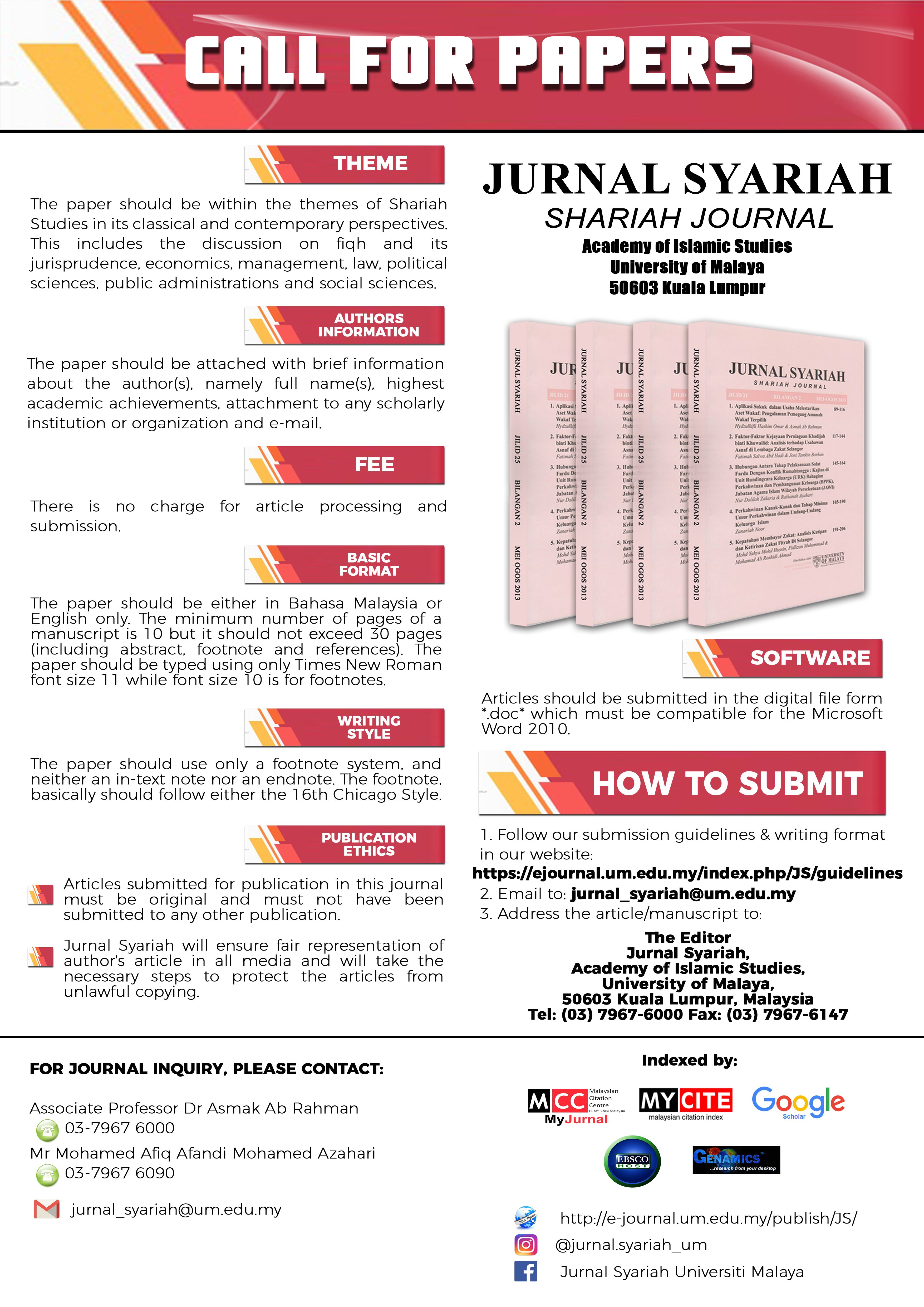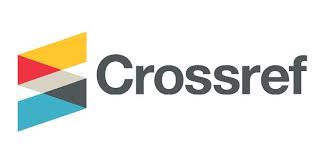DEVELOPMENT OF WA'D-BASED PRODUCTS IN THE ISLAMIC BANKS OF BANGLADESH: A CASE STUDY
DOI:
https://doi.org/10.22452/js.vol23no1.5Keywords:
wa‘d, Islamic bank, Islamic banking product, Bangladesh, ShariahAbstract
A large number of product innovations in Islamic banking have been achieved globally through the usage of wa‘d. However, little is known about the product innovation in the Islamic banks of Bangladesh. Therefore, this study aims at examining the development of wa‘d-based product in the Islamic banking of Bangladesh. It analyzes the product structures that involve wa‘d and attempts to find out the Shariah issues and other challenges. Besides, it suggests potential mechanism to innovate more products based on wa‘d for the Islamic banks in Bangladesh. The study adopts a case study approach where two full-fledged Islamic banks and one Islamic banking window are selected. The study conducts semi-structured interviews with the bankers and Shariah advisors in Bangladesh. Besides, it employs document analysis method to strengthen the findings. The study finds out that even though wa‘d has much potential, it has been used only in three consumer banking products. Due to the stringent position of the Shariah scholars, it is not possible to practice remarkable treasury products as well as some consumer products. The study recommends that the Shariah scholars should be more flexible in exercising legal reasoning (ijtihad). Together with the wa‘d, muwa’adah and wa‘dan can be two viable concepts for more product innovation in Bangladesh. The study might be useful for the practitioners in other jurisdictions. Furthermore, it adds new knowledge for Islamic banking product development.
Downloads
Downloads
Published
How to Cite
Issue
Section
License

This work is licensed under a Creative Commons Attribution-NonCommercial 4.0 International License.
COPYRIGHT: All rights reserved. Not allowed to be reproduced any part of articles and contents of this journal in any form or by any way, whether electronic, mechanical, photocopying, recording or otherwise without permission in writing from the Chief Editor, Jurnal Syariah.



















